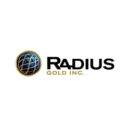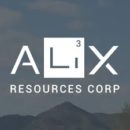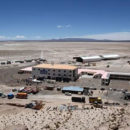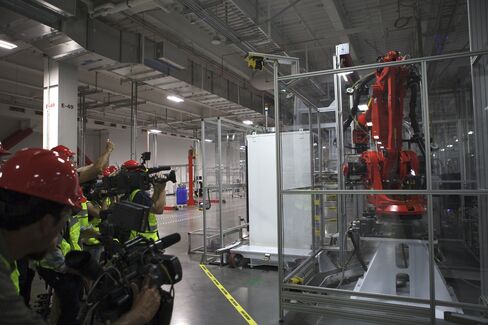Radius Gold Stakes 4 Lithium Brine Projects in Mexico and Options to Advantage Lithium $RDU.ca $PFN.ca
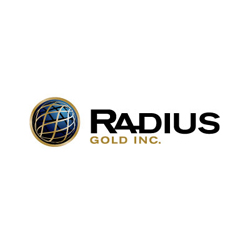
- Projects focused on large closed basin salar targets, analogous to Clayton Valley
VANCOUVER, BRITISH COLUMBIA–(Sept. 12, 2016) – Radius Gold Inc. (TSX VENTURE:RDU) is pleased to announce that it has applied for mineral concessions totalling 37,000ha covering four lithium brine targets in northern Mexico. Further Radius is pleased to announce it has signed an option agreement with Advantage Lithium Corp. (TSX VENTURE:AAL) to fund exploration of the properties.
While working in northern Mexico, Radius’ exploration team recognized the potential of the large salar basins and compiled a database from historic lithium exploration conducted by the Mexican geological survey between 1987 and 1993. Radius applied for concessions covering the targets and has attracted an experienced and well-funded partner in Advantage Lithium.
Alix Resources Acquires Cross Lake Lithium Property, Manitoba
- Announce the acquisition of a 100% interest in the Cross Lake Lithium property (“Cross Lake Property”) located about 528 km north of Winnipeg, Manitoba.
- Property covers the Cross Lake pegmatite field, including the Liz Lithium prospect, located on Spodumene and Metis Islands in the southwestern corner of Cross Lake
Vancouver, British Columbia–(August 25, 2016) – ALIX RESOURCES CORP. (TSXV: AIX) (FSE: 37N) (“Alix” or the “Company”) is pleased to announce the acquisition of a 100% interest in the Cross Lake Lithium property (“Cross Lake Property”) located about 528 km north of Winnipeg, Manitoba.
The Cross Lake Property comprises one Mineral Exploration Licence (MEL 1050A) encompassing 5,040 hectares and is located about 4 km southwest of the community of Cross Lake. The property covers the Cross Lake pegmatite field, including the Liz Lithium prospect, located on Spodumene and Metis Islands in the southwestern corner of Cross Lake. The granitic pegmatites form an 8 km-long, en echelon and lenticular swarm south of Cross Island dipping 45° north.
The Cross Lake Property was explored from the late 1970’s to 1981 by the Tantalum Mining Corporation of Canada Limited (“TANCO”). The Company discovered tantalum (Ta) and niobium (Nb) oxide mineralization in granitic pegmatites. TANCO, was the operator of the Tanco mine, located at Bernic Lake, in southeastern Manitoba (now owned by Cabot Corporation), which was North America’s largest producer of spodumene, tantalum and cesium.
In 1980-1981, TANCO drilled 23 diamond drill holes totaling 2,483 m. Several holes intersected zones of spodumene mineralization (e.g. up to 40 % spodumene in hole # 3 over a 1.3 m width). Moreover, 20 m-thick spodumene-rich intersections in individual and/or multiple intervals were encountered. The core was analyzed only for tantalum and tin. The documented occurrences of spodumene showings and the geological data base from TANCO’s drilling campaign present a compelling target with a potential to discover and define new lithium resources.
Read MoreNemaska Lithium Preps Whabouchi Mine Site for 60,000 t Bulk Sample and Modular Mill Installation

QUEBEC CITY, QUEBEC–(Marketwired – Aug. 16, 2016) – Nemaska Lithium Inc. (“Nemaska Lithium” or the “Corporation”) (TSX:NMX)(OTCQX:NMKEF) is pleased to provide an update on the bulk sample and modular mill installation at the Whabouchi mine located in the Eeyou Istchee James Bay region, Quebec, Canada. Nemaska Lithium has applied for a Certificate of Authorization to install and operate a new self-contained dense media separation (DMS) modular mill. The modular mill has a processing capacity of 10 t/hour. The Corporation has also decided to increase the mine representative bulk sample from 29,000 t to 60,000 t. This bulk sample will be milled to obtain a 6% Li2O concentrate that will be further processed into lithium hydroxide at Nemaska Lithium’s Phase 1 Plant which is under construction in Shawinigan, Quebec. With the General Certificate of Authorization for the Whabouchi Mine site already in hand, Nemaska Lithium is not anticipating any issues with the ongoing further permitting and has given a mandate for site preparation and installation of the modular mill to Met-Chem Canada, member of the DRA Group. The Corporation is anticipating installation and commissioning of the DMS modular mill to be completed by the end of October 2016 with the mill producing a DMS concentrate over the next 12 to 18 months following the commissioning phase. Part of the DMS material will be further processed through flotation before being shipped to the Phase 1 plant in Shawinigan, Quebec.
“The modular mill is a critical component of our Phase 1 Plant project as it will produce the necessary concentrate that will be further processed into lithium hydroxide samples for customers that are seeking to qualify our products,” said Guy Bourassa, President and CEO of Nemaska Lithium. “With the recent addition of Mr. François Godin as VP Operations, I am very confident that this project is in good hands and we will be on track to start shipping mine representative commercial samples of lithium hydroxide to customers including Johnson Matthey Battery Materials by Q1 and Q2 2017.” Bourassa continued, “Qualifying ourselves with customers as a new lithium hydroxide supplier is normal course of business in this industry and is the rationale behind building the Phase 1 Plant and operating the DMS modular mill. This strategy will enable us to more rapidly start realizing revenue from the commercial Hydromet plant which is still on target for commissioning in Q2 2018.”
Read More
